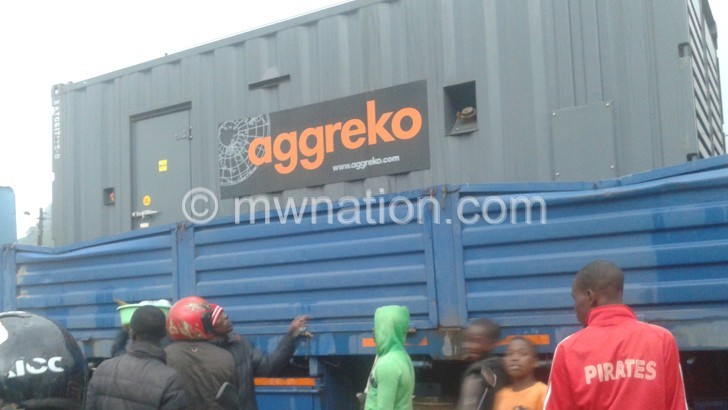Lake Malawi water levels jump 22%
Water levels in Lake Malawi have surged 22 percent since the onset of the rainy season, but power output has largely remained flat, The Nation has learnt.
In defending its failure to boost power output despite the increase in Lake Malawi water levels—whose drop was the reason Electricity Generation Company of Malawi (Egenco) said depressed output—the company yesterday stated that the jump cannot instantly translate to increased power generation because the State electricity producer is reserving the water for use during the dry season.

The explanation comes in the wake of information that the Ministry of Agriculture, Irrigation and Water Development gave The Nation on Wednesday that water levels in the lake had jumped by about 22 percent due to constant water flow from Northern Region sources.
In an interview, the ministry’s spokesperson Osborne Tsoka, however, said the dry spell that has hit some parts of the Central and Southern regions has meant that the levels could not get higher.
But in a separate interview yesterday, Egenco chief executive officer William Liabunya said his company has paltry gained from the 22 percent water level increase because it is reserving the water for the dry spell.
He said: “We have only increased the flows from a minimum of 105 cubic metres a second. During the lean period, the flows kept going down on their own, but with the rains that have started, we have moved to 115 cubic metres per second. This is what we are benefiting.
“Currently, we have not completely opened the gates at Liwonde [Kamuzu Barrage]. This means that all the water coming in the lake is being conserved in the lake. Only when we have realised how much we have obtained at the end of the rainy season, will we determine how much we can open and fully benefit from that water.”
Liabunya said Egenco is focusing on diesel generators since the company does not know how much rain the country will receive this year.
He said: “We feel it is better to work on the diesel engines for now when we know we have little water that we can be supplementing with the diesel engines rather than finishing the water and come to a point where we can only be relying on the diesel engine.”
But reacting to Egenco’s plan in an interview, environmental analyst David Mkwambisi questioned the power producer’s logic, saying it would not be practical for Egenco to conserve water either in Lake Malawi or the upper Shire River.
He said: “Unless the Kamuzu Barrage is kept completely closed, we may not be able to conserve water for electricity generation during the dry season. However, the lake and the Shire River have many ways of losing water such as evaporation; hence, water may not last till the coming dry season.”
Mkwambisi, who is associate professor of environmental sustainability at the Lilongwe University of Agriculture and Natural Resources (Luanar), said all rivers that feed into Shire River do not have water because the country is not receiving heavy rains this year.
He said: “Rivers are becoming dry and, as such, will lose more water through evaporation.”
However, Liabunya assured Malawians of improved electricity supply on completion of the installation of the generators.
He said: “We completed the installation of the six megawatts [MW] generator in Mzuzu after which we will proceed in due course to commission the 20MW for Blantyre and 10 MW for Lilongwe. We are expecting to finish everything and have all these up and running by March.”
In the long term, Liabunya said the company is taking on a 320MW project at Mpatamanga, which has started with feasibility studies that the World Bank funded.
In 2017, Malawi experienced extended load shedding lasting up to 25 hours in some parts of the country following the lowering of water levels in Lake Malawi and its sole outlet, the Shire River—the major source of Malawi’s hydro power. n





